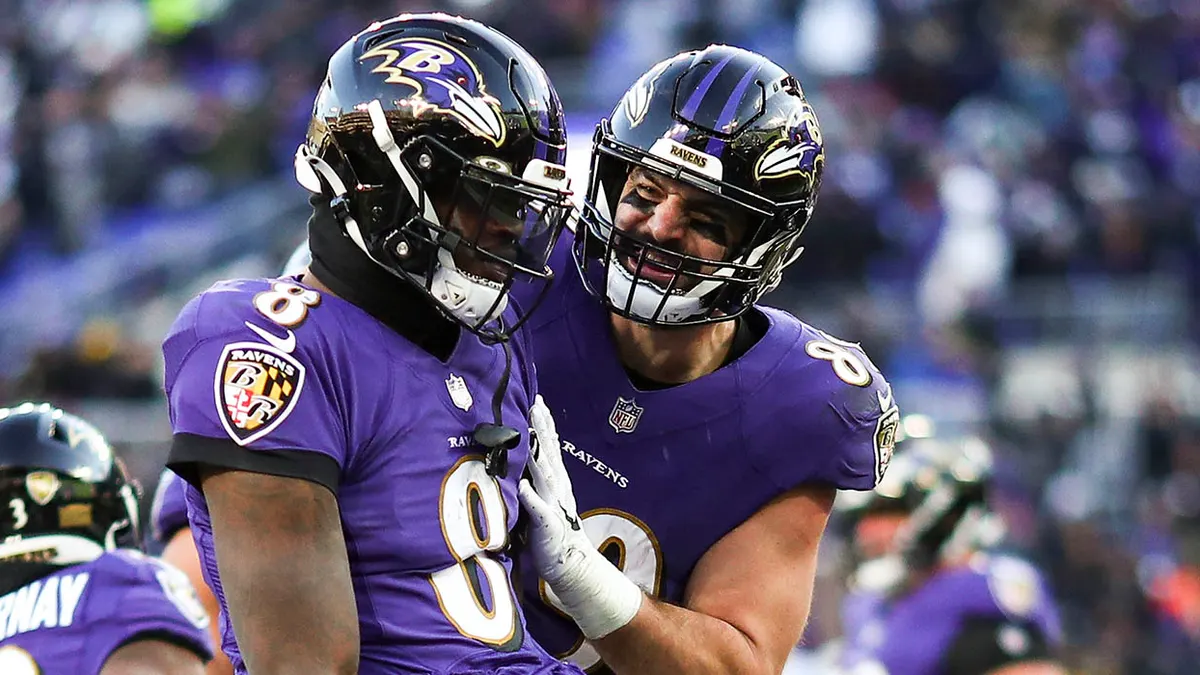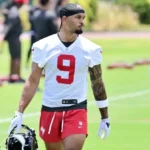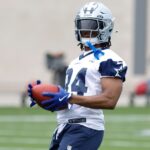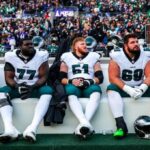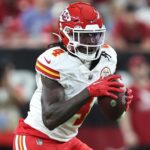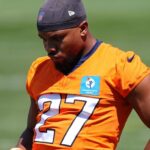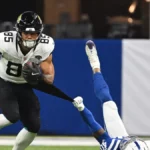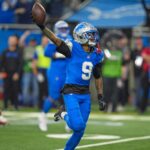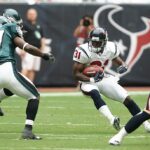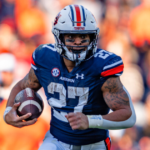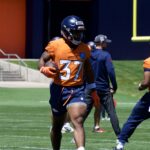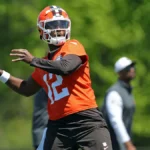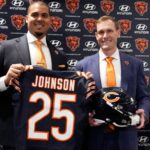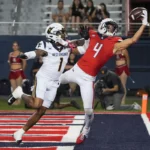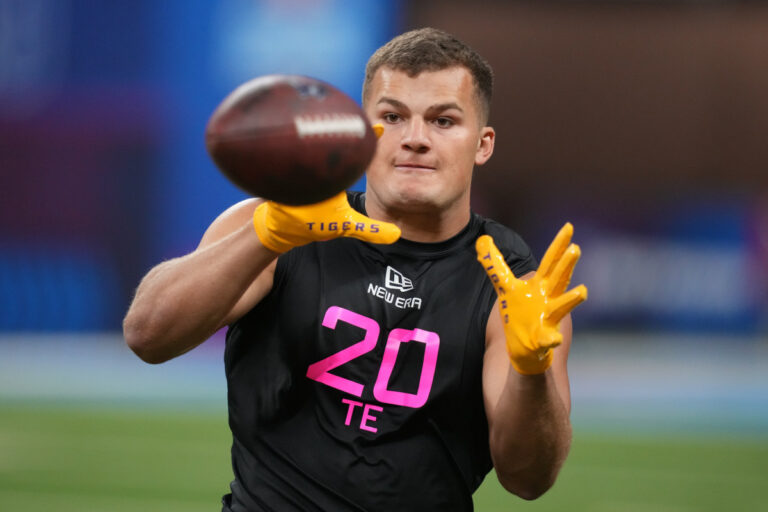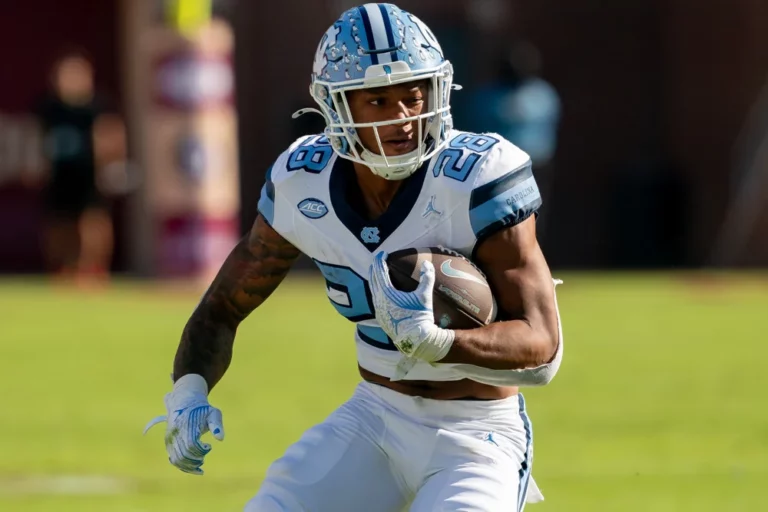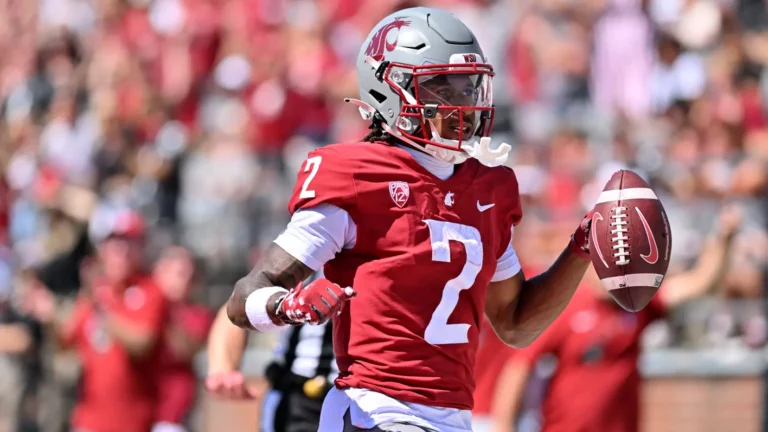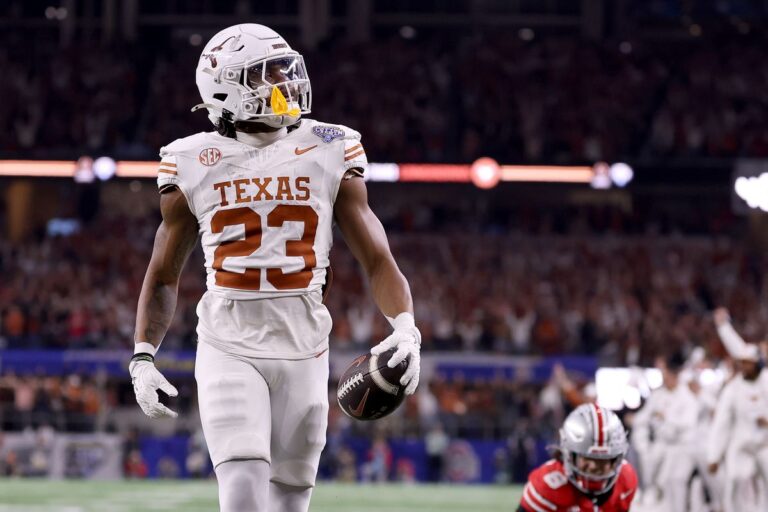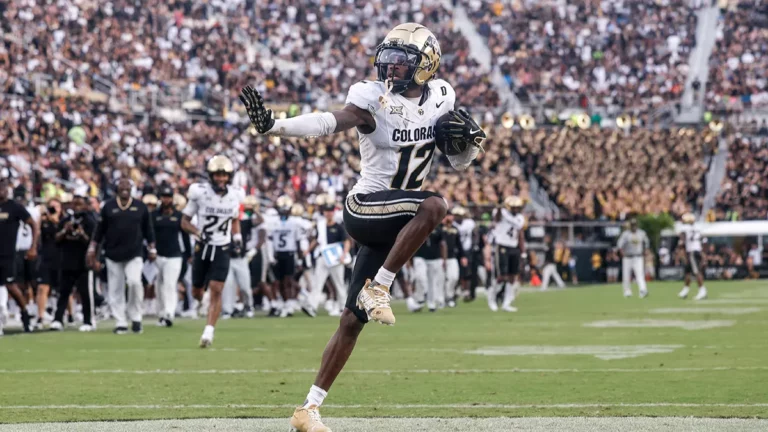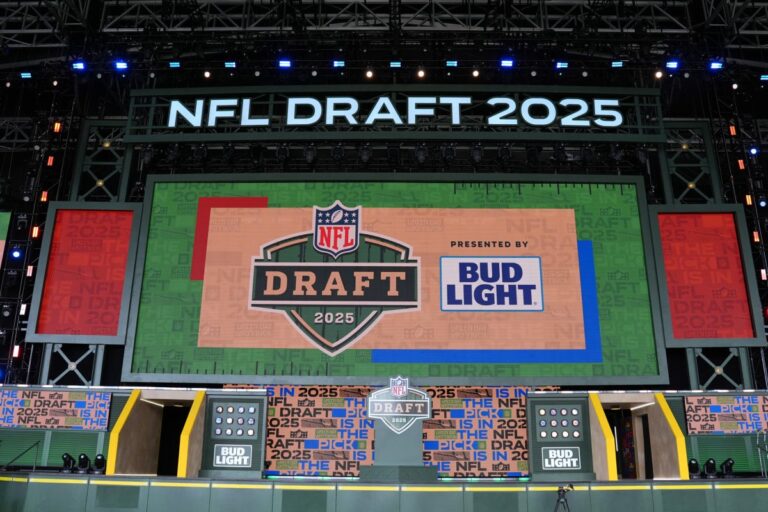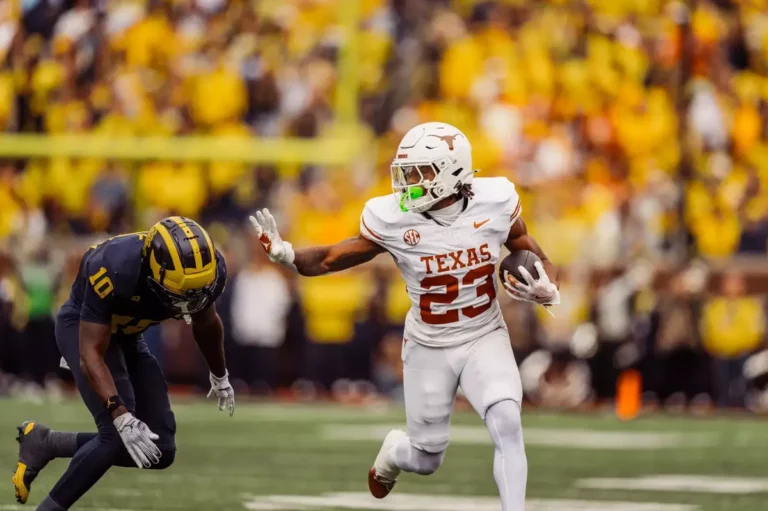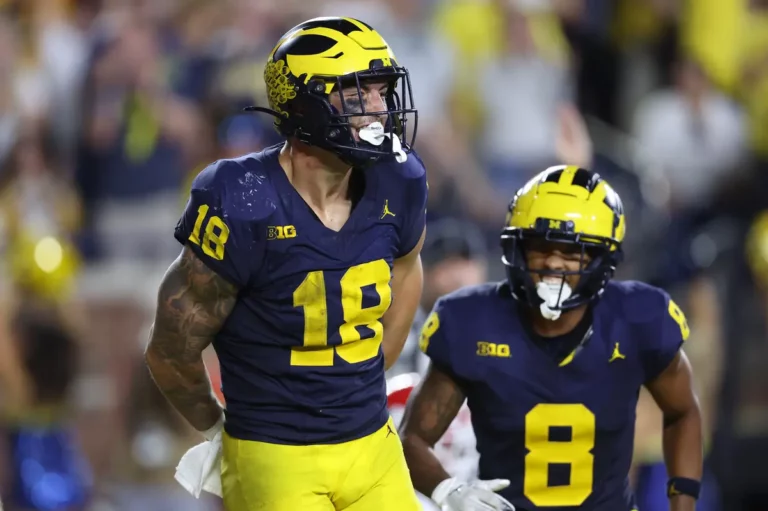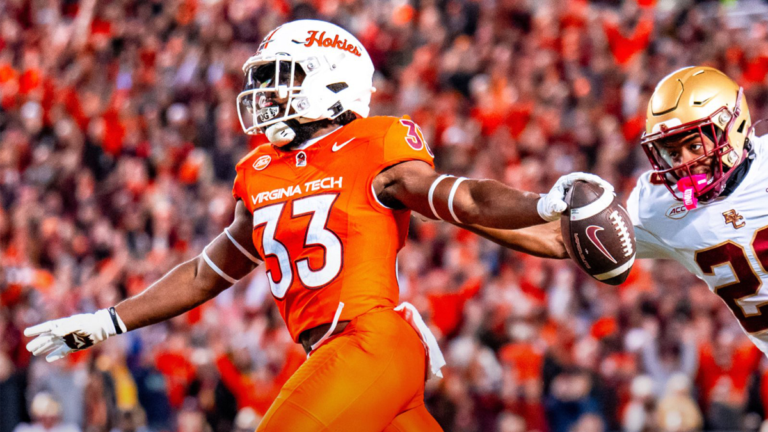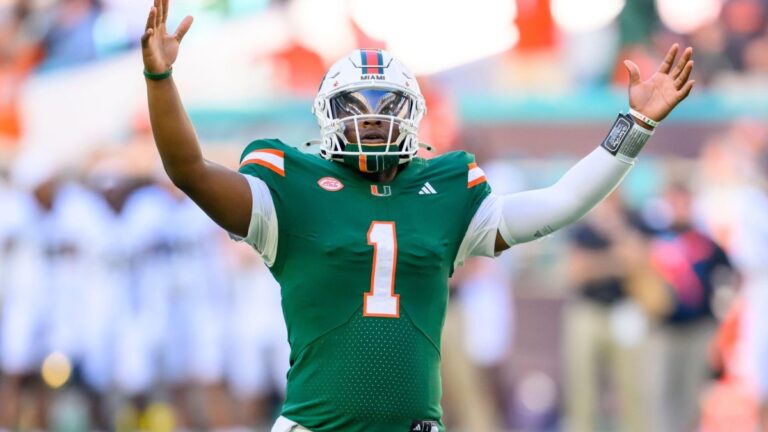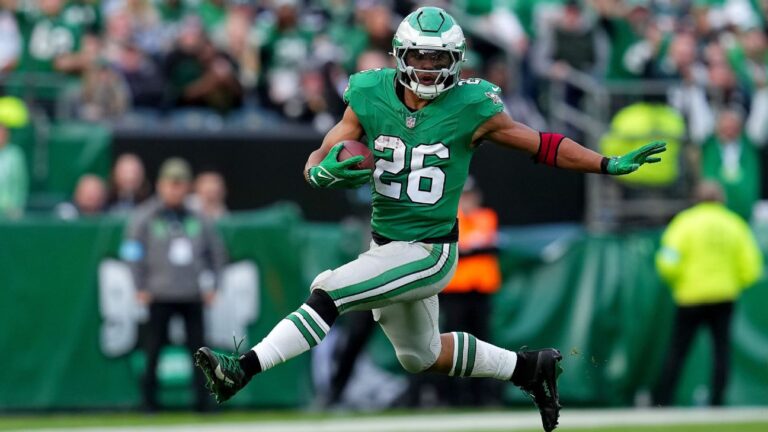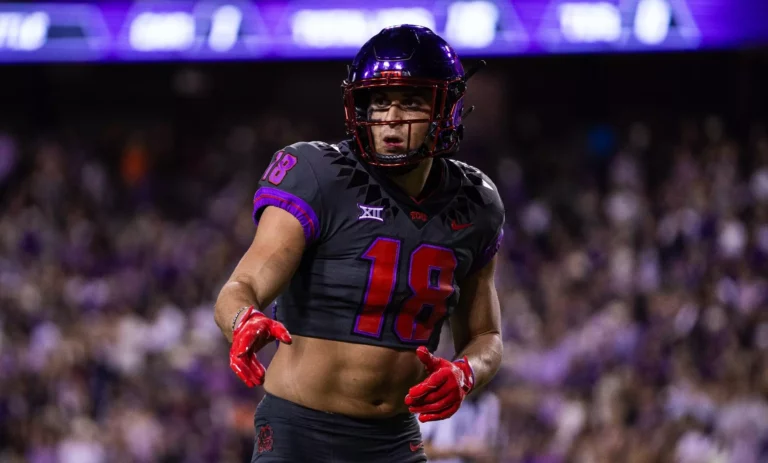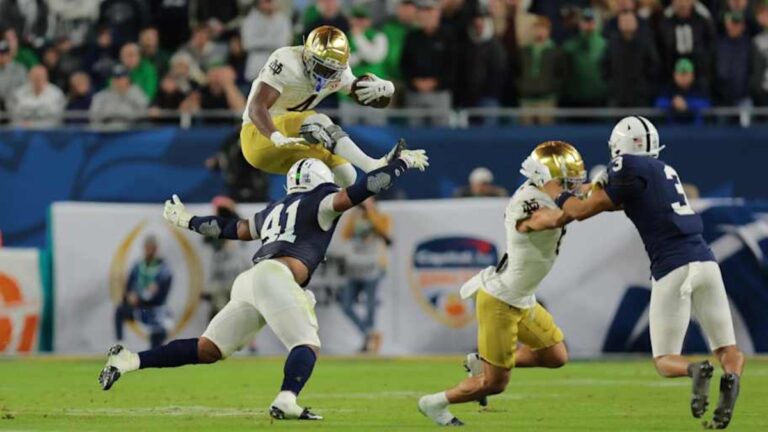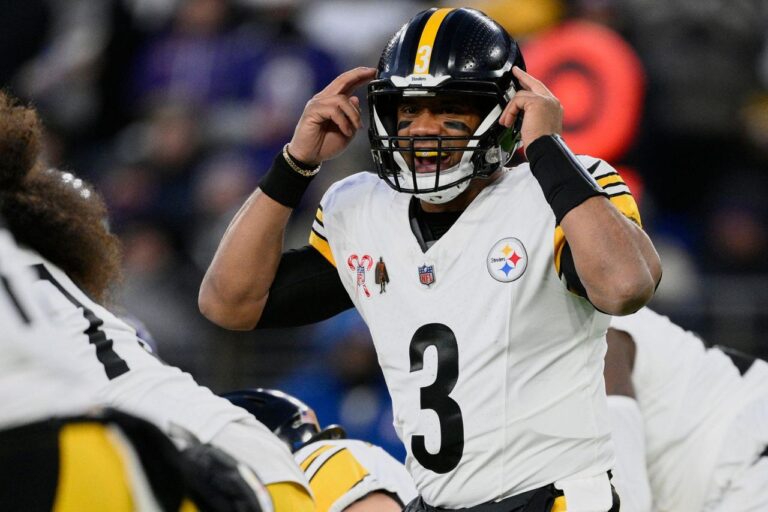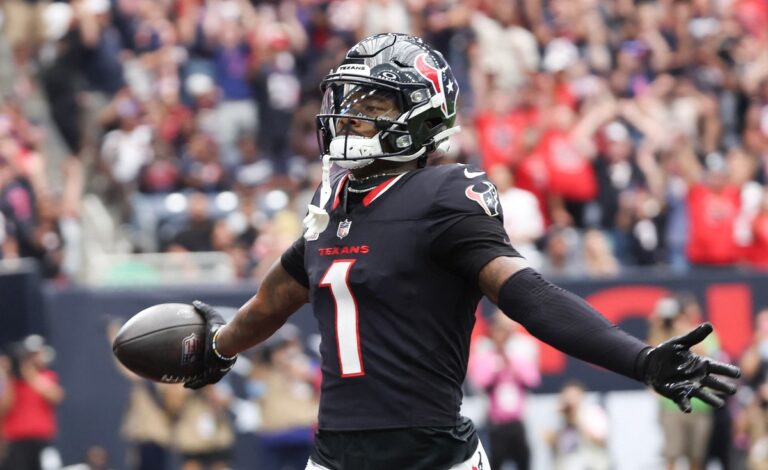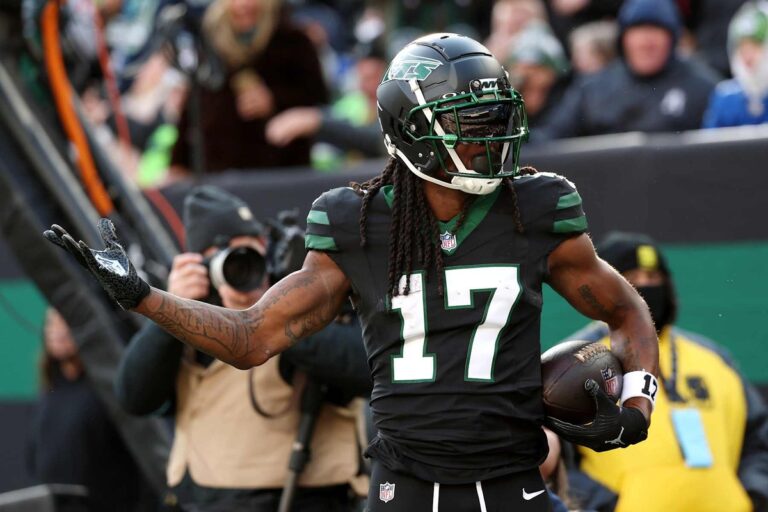The Best Ball Tournament Entry
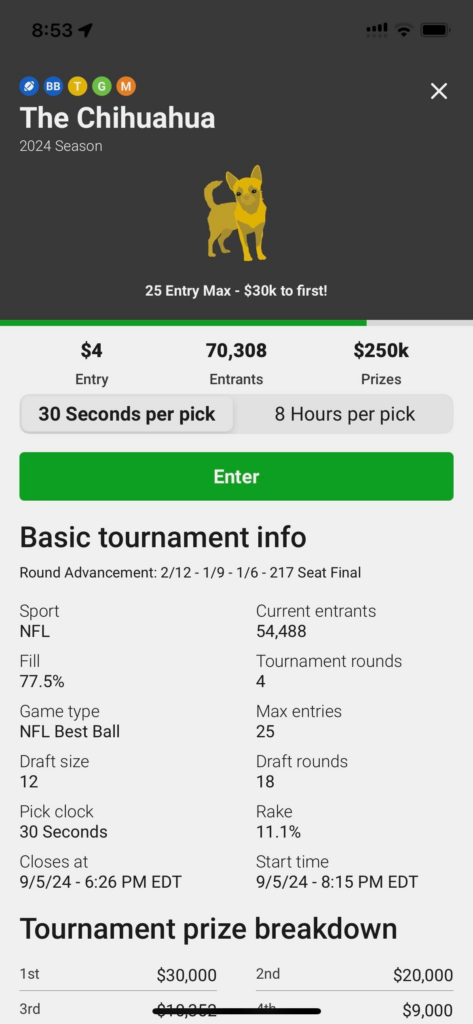
The NFL Schedule came out less than 12 hours after I took this screenshot. I couldn’t help but think there was an incredible opportunity and edge here. I knew the schedule, and the 55,000/ 70,308 (77.5%!) contestants before me had entered the Chihuahua drafts without the full picture.
The edge, I thought, knowing the playoff matchups for each team in Weeks 15, 16, and, most importantly, 17, was substantial, and I simply had to do what any reasonable person would do in this scenario—max out this contest with 25 slow drafts at the same time.
The next day, Thursday, May 16th, at around 5:00 p.m., I began all 25 slow drafts. At this point, I think the contest was roughly 92% full. As a part-time writer at Roto Street Journal and a full-time idiot with a separate and less exciting full-time role, this was undeniably a fantastic idea for productivity.
Jokes aside, I think this was a smart move. I’m not exactly liquid enough to max out BBMIV, so instead of entering only 4 of those drafts for $100, I give myself the best chance of claiming a 1st place prize (albeit $1,470,000 less) by maxing this contest with a competitive advantage. The advantage, of course, was the extra information (and especially the Week 17 information) I had over >60% of the field. I estimate only 60% because, realistically, a significant portion of the drafts were still going when the schedule was released.
Plus, the later you draft, the more information you will have available. Is it always better information? No. With that said, my drafting was 100% affected by early camp hype. I told myself that this was a good thing and to really pounce on this information that most of the field didn’t have when they drafted. Time will tell whether or not this was a good idea (looking at you, Jameson Williams…).
Week 17 Best Ball Strategy
My strategy for stacking in Week 17 was simply having at least two to three game stacks in every draft. Instead of trying to predict which Week 17 game would be the game to go off, I decided to rely on my player takes to draft the players I liked most and stack from there. If the players I like are who I think they are, they will have the upside of having a “had to have it” Week 17 scoreline.
Last year, the best ball community had their eyes on the Chiefs-Bengals game as a must-target. What happened? Joe Burrow got hurt, the Chiefs’ offense was operating below expectation, and the Chiefs’ defense was surprisingly elite. As much as we think we know how each NFL team will perform this year, there’s no way we can predict which games in December will matter most for fantasy points.
That being said, I don’t think it’s wrong to want to stack the Lions vs. 49ers Week 17 game more often than others. I’m not interested enough in each team’s players at a cost to feel it’s worth doing. You need to find balance in how you approach stacking for Week 17. Don’t take players you think are priced poorly just for correlation. I prefer the Week 17 correlation to break ties over players I view similarly.
Breaking Down the Landscape: Running Back and Wide Receiver
From consuming the best ball content, I learned to hammer WRs in the first six rounds, as they get really gross really quickly. Not to mention, those round 7-10 RBs look pretty decent.

That’s a pretty solid tier.
Looking back, I wish I had stuck more with this idea. I am content with taking Bijan Robinson, Breece Hall, and Derrick Henry. Still, I wish I hadn’t taken as much Kyren Williams, Isiah Pacheco, Aaron Jones, Joe Mixon, and Alvin Kamara as I did. They are good picks, but many of my teams could’ve benefited from a stronger WR room instead.
I regret my decisions when I reached the range of rounds 7-10, where I liked the RBs available but had to click on a WR.

There is a very clear tier break right after Jameson Williams (one could argue before Williams, but again, I bought into camp hype for these drafts). If I had a team with less than 5 WRs at around pick 90, I would have become filled with regret. Courtland Sutton, Curtis Samuel, and Tyler Lockett are not the type of high-upside picks I want to make in tournament best ball. And I’m literally never going to draft Romeo Doubs. Why draft him as my No. 5 or No. 6 WR when I think it’s pretty clear he’s the No. 4 WR on his own team?
Breaking Down the Landscape: Quarterback

This feels like a weird year for the quarterback position.
CJ Stroud is being drafted at what I think is his peak, and Justin Herbert is being drafted at his rock bottom. Why? While the offensive expectations for each of them are at all-time highs and lows, I think the main reason is where their surrounding talent is drafted. These ADPs signal what the market thinks of each offense.
You can triple stack Stroud with Nico Collins, Tank Dell, and Stefon Diggs, who each have an ADP before pick 36! Meanwhile, Herbert’s “top” 3 options, Ladd McConkey, Joshua Palmer, and Quentin Johnston, are drafted at 69.0, 109.0, and 148.2, respectively.
Is this correct? To some extent, I think yes. But I think we have taken our concerns of the Chargers too far at this point. This is, after all, the same Justin Herbert, who was at one point considered a top-five dynasty QB.
I wish I drafted more Herbert and McConkey. The rookie wideout is not cheap, but early reports are super bullish for Justin Herbert’s likely No. 1 option. It would not surprise me if this is the stack you need to win leagues in 2024.
There is plenty of value at QB. I firmly believe both early-round and late-round quarterback approaches can help you succeed in tournament best ball this year. What will give you the highest advance rate? There’s no question for me that it’s taking as much Anthony Richardson as humanly possible, but more on that later.
Breaking Down the Landscape: Tight End

A common theme of this article is kicking myself for not taking bigger player stands on values I think are clear and obvious. One of those values I wish I had taken more is Mark Andrews. Pick 49 is NUTS for Mandrews. He likely remains the No. 1 option on the Ravens. Andrews is coming off an ankle injury, but he is only 28 years old! Travis Kelce is 34. Think about how many productive seasons Kelce has had since age 28.
Andrews' ADP is borderline CRIMINAL! 🚨@ScottBarrettDFB and @RyanJ_Heath highlight the most essential and best value picks at the TE position in Underdog Fantasy best ball drafts. pic.twitter.com/h04OWWRWrt
— Fantasy Points (@FantasyPts) June 20, 2024
I believe in going early TE in this market (as long as their name isn’t Sam LaPorta). I’m sorry, but an ADP of 34.8 for a TE who is 100% at least the second option in the passing game will never cut it for me. The main reason I think early TE is viable is because these prices are pretty affordable for potential elite options like Kelce and Andrews.
Not to mention, I’m absolutely back in on Kyle Pitts. Pitts ranked 3rd only to Kelce and Andrews among all TEs in Expected Fantasy Points per game in 2023. Pitts seemed to be more injured than most realized last year, and he gets maybe the biggest possible upgrade at QB.
Kyle Pitts 2023 downfalls:
— Ian Hartitz (@Ihartitz) June 10, 2024
-MCL/PCL injury lingered throughout season
-QB performance bordered on worst in NFL
-Jonnu Smith got most of the "easier" designed/YAC-friendly targets
2024 updates:
-Believed to be 100% healthy
-Kirk Cousins
-Zero high-end receiving competition at TE
My Biggest Regrets… So Far
Life comes at you fast, and when you are drafting 25 teams at the same time, the number of rounds you have completed on all 25 teams goes by quicker than you would think. It took me until round 4-6ish before I created a system to monitor my player exposures more efficiently, which I’ll touch on later.
Here is the list of players under pick 100 that I drafted on exactly 0/25 teams. I have bolded my biggest 0% regrets and italicized the guys I still wouldn’t touch with a 10-foot pole. If these ADPs look different to you, it’s because I input them right after my drafts were over to show exactly where I faded these players.
- Jonathan Taylor (ADP 15.6)
- De’Von Achane (ADP 24.7)
- Sam LaPorta (ADP 29.4)
- Josh Jacobs (ADP 41.9)
- Tee Higgins (ADP 42.1)
- Patrick Mahomes (ADP 47.6)
- James Cook (ADP 55.1)
- Rachaad White (ADP 56.4)
- George Kittle (ADP 66.7)
- Kyler Murray (ADP 77.9)
- D’Andre Swift (ADP 85.9)
I think it is a mistake not to draft 11 of the first 100 players on any of my 25 drafts. This number should probably be closer to 3-5. Another legitimately bad thing I did was not have at least one team (4%) with every guy from the first four rounds. I likely still would draft 0% LaPorta and Josh Jacobs, even though that isn’t a great strategy. The funny thing about Jonathan Taylor and Kyler Murray is that I actually really like both of them. This was malpractice.
Why do I hate Josh Jacobs and Rachaad White at cost?
Both the Buccaneers and the Packers took running backs Bucky Irving and Marshawn Lloyd in the 2024 NFL Draft. I think it is very likely we see the price for Josh Jacobs decrease pretty significantly once training camp begins. Just picture a video dropping of Marshawn Lloyd in shorts making some sweet jump cut with a bunch of fire Emojis in the caption. It is inevitable. As for White, I think he was largely a product of the Dave Canales system, and I’m not convinced he’s that good of a running back. Because of the Canales move to the Carolina Panthers HC role, I am head over heels in love with Jonathan Brooks.
Why should I care about Jonathan Taylor and De’Von Achane?
I worry a lot about not taking either of these guys. What makes things worse is that I heard really compelling arguments in their favor after realizing I had 0% of both of them. If I were redrafting all of these teams, I would have at least 12% of each.
If you follow Ryan Heath, you have seen the bull case for Achane:
De'Von Achane just had the most efficient rookie season ever, and could well be the next Alvin Kamara.
— Ryan Heath (@RyanJ_Heath) May 12, 2024
Among rookie RBs drafted Rounds 1-3 who outperformed their weighted opportunity by +2.5 PPG or more:
– 5/5 had a volume increase in Year 2
– 4/5 topped 20 PPG in Year 2 pic.twitter.com/t72wT3Q8Fr
As for Taylor, just look at what he did when he was fully healthy last season. From Week 7 onward, Taylor ranked 3rd among all RBs in Underdog’s half-PPR format by fantasy points per game, averaging 16.8 despite only holding a 66% snap share.
The System
Earlier, I referenced a system I used once I was past round 4-6 or so on all of my drafts to keep track of my player exposures. This was a very simple tracking system used in Google Sheets. They are here if you want to see all 25 of my teams and player exposures.
The team names refer to my draft position (number), and when I input them into the Google Sheets. So, they are formatted as a number and then a letter. For example, the first team I entered was 1A, my one and only Christian McCaffrey-led squad.
I used conditional formatting as follows for my player exposures:
- Red = Drafted on exactly one team (or 4%)
- Gray = Drafted on two teams (or 8%)
- Green = Drafted on at least 3 teams, but no more than 5 teams (12%-20%)
- Gold = Drafted on at least 6 teams, but no more than 12 teams (24%-48%)
- Pink = Drafted on at least 13 teams (52%-100%)
I did not end up having any player exposures highlighted in pink, meaning I did not draft any one player on 13 teams (probably for the best). This conditional formatting was very useful to keep my exposures in check. It likely prevent me from clicking Xavier Legette’s name in every single draft without realizing it.
Feel free to copy this janky formatting for your personal league-winning teams.
My Most Drafted (League Winning) Players
Here are all the players I drafted on at least 6 (24%) of my teams:
- Xavier Legette (40%)
- Anthony Richardson (32%)
- Braelon Allen (32%)
- Malik Nabers (24%)
- Amari Cooper (24%)
- Jalen McMillan (24%)
- Jonathan Brooks (24%)
- Rashee Rice (24%)
For an in-depth breakdown of why I’m targeting these eight players, click here.
Actionable Insights
Underdog recently released The Chihuahua 2, which filled pretty quickly. I think there is a decent chance Underdog will drop a third Chihuahua Draft at some point this summer. Use what you’ve learned from this article to take down The Chihuahua 3 and other Underdog Best Ball Tournaments! And don’t forget to check out The Wolf’s Best Ball Rankings to set yourself apart from the crowd!
